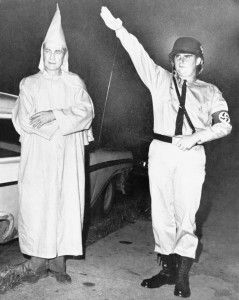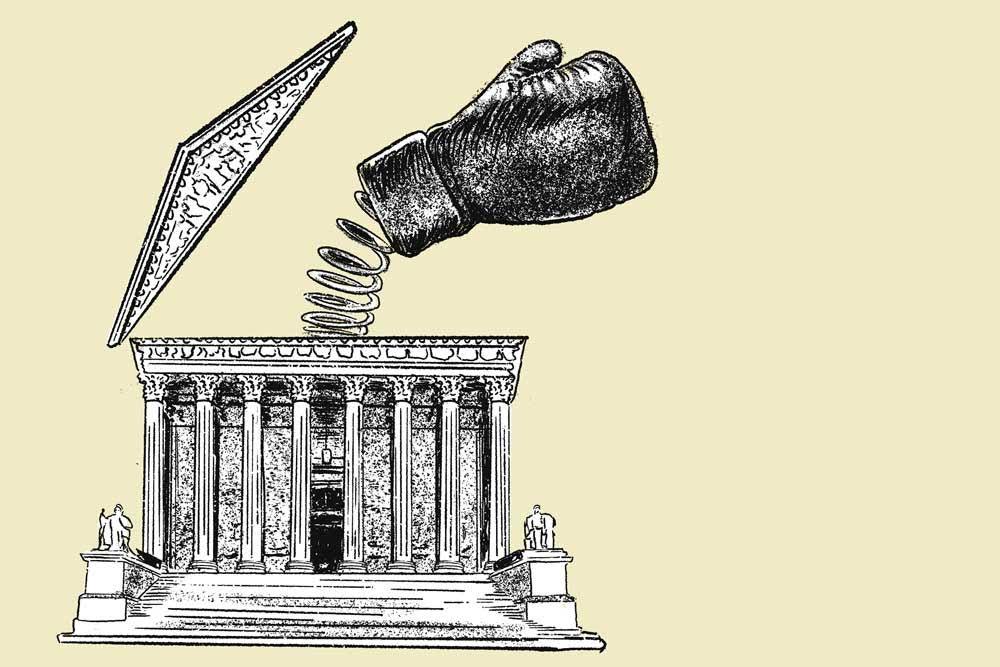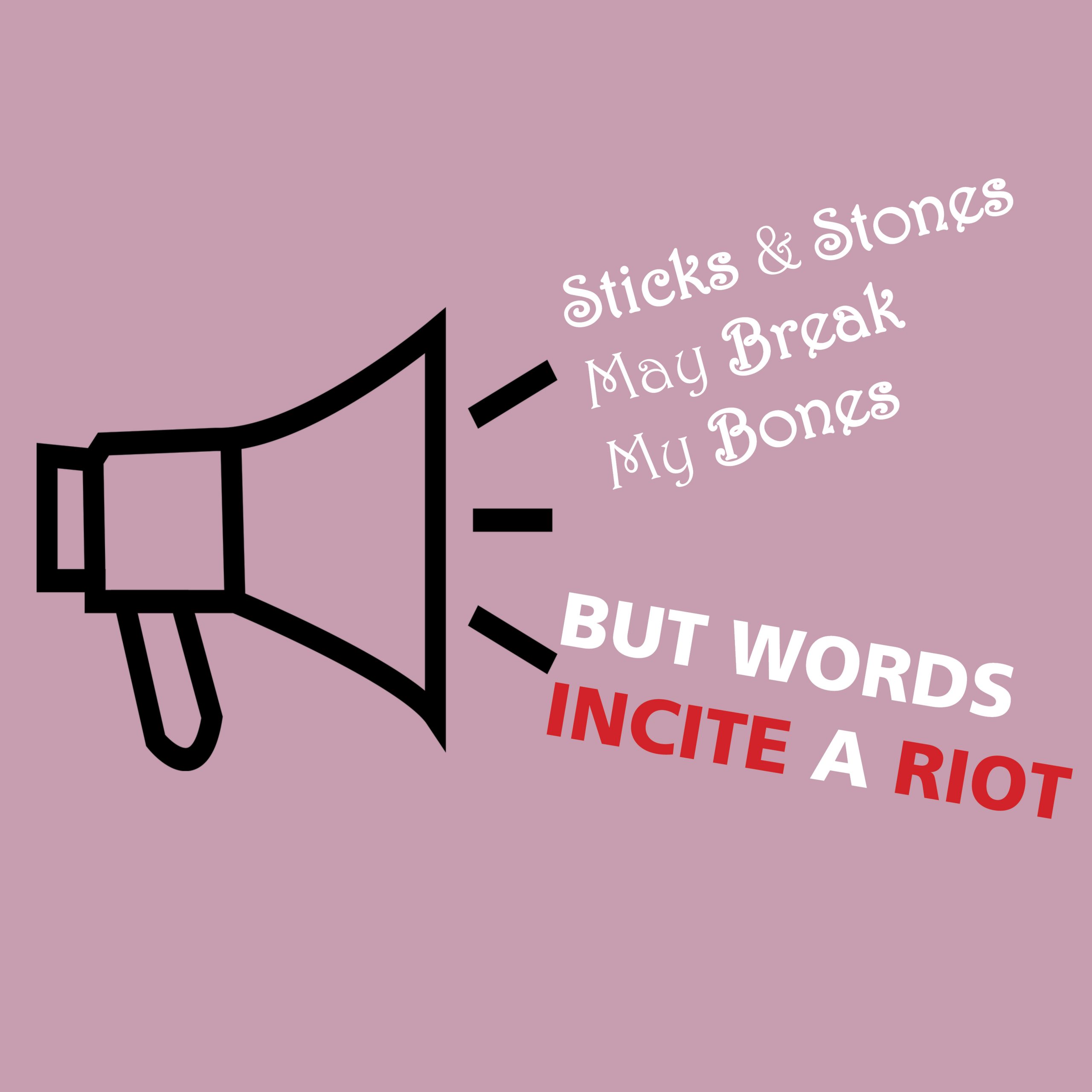Incitement to Imminent Lawless Action
By John R. Vile
Many Supreme Court cases upholding restrictions on speech believed to be subversive have relied on the idea that such speech is forbidden because it incites, or is likely to lead to, violence or illegal actions.

Clear and present danger test used first
In applying the clear and present danger test in Schenck v. United States (1919), Justice Oliver Wendell Holmes Jr. observed: “The question in every case is whether the words used are used in such circumstances and are of such a nature as to create a clear and present danger that they will bring about the substantive evils that Congress has a right to prevent.” Holmes cited the example of a person who falsely shouts “Fire!” in a crowded theatre, causing a panic.
In Gitlow v. New York (1925), the Court reverted to a bad tendency test while upholding New York’s criminal anarchy law. In this case, Benjamin Gitlow was arrested for distributing copies of a manifesto that called on fellow left-wing socialists to establish socialism through strikes and class action. He was convicted under a state criminal anarchy law, which called for punishing anyone advocating the overthrow of the government by force.
In his opinion for the Court, Justice Edward Terry Sanford ruled that states had the right to punish “utterances inimical to the public welfare, tending to corrupt public morals, incite to crime, or disturb the public peace.” He further pointed out: “The state cannot reasonably be required to measure the danger from every such utterance in the nice balance of a jeweler’s scale. A single revolutionary spark may kindle a fire that, smouldering for a time, may burst into a sweeping and destructive conflagration.”
In his dissent, joined by Justice Louis D. Brandeis, Justice Holmes responded that the majority’s distinction between theory and incitement was inadequate:
“It is said that this manifesto was more than a theory, that it was an incitement. Every idea is an incitement. It offers itself for belief and if believed it is acted on unless some other belief outweighs it or some failure of energy stifles the movement at its birth. The only difference between the expression of an opinion and an incitement in the narrower sense is the speaker’s enthusiasm for the result. Eloquence may set fire to reason. But whatever may be thought of the redundant discourse before us it had no chance of starting a present conflagration.”
Court distinguished between advocacy and incitement
In later cases, the Court often distinguished between mere advocacy and incitement. Thus it upheld a conviction under a state criminal syndicalism law in Whitney v. California (1927) on the grounds that Communist Labor Party member Anita Whitney had joined had uttered words “inimical to the public welfare, tending to incite crime, disturb the peace or endanger the foundations of organized government and threaten its overthrow.”
In Dennis v. United States (1951), the Court also upheld the conviction of leading organizers of the Communist Party of the United States employing the gravity of the evil test, but it reversed the convictions of lower-level functionaries in Yates v. United States (1957). In Yates, however, it observed that “indoctrination of a group in preparation for future violent action, as well as exhortation to immediate action, by advocacy found to be directed to ‘action for the accomplishment’ of forcible overthrow, to violence ‘as a rule or principle of action,’ and employing the ‘language of incitement,’ . . . is not constitutionally protected when the group is of sufficient size and cohesiveness, is sufficiently oriented towards action, and other circumstances are such as reasonably to justify apprehension that action will occur.”
Court tested if advocacy would incite imminent lawless action
In Brandenburg v. Ohio (1969), the Court overturned the conviction of Clarence Brandenburg, a member of the Ku Klux Klan who had made inflammatory statements, by insisting that it would only punish advocacy that “is directed to inciting or producing imminent lawless action and is likely to incite or produce such action.” Still, one might expect that, much as it did when it applied the gravity of the evil test, the Court would distinguish between the kinds of illegal actions advocated — that is, an incitement to walk on the grass would hardly seem to merit the same kind of attention as calls for bombings or assassinations. In Hess v. Indiana (1973), the Court applied Brandenburg and said that before an individual’s speech could fall under the unprotected category of incitement to imminent lawless action, the speech must lead to “imminent disorder.”
Imminent lawless action test still being fleshed out
Confronted in Stewart v. McCoy (2002) with an individual who had been accused of advising gang members on how to organize themselves, Justice John Paul Stevens, in an opinion commenting on the Court’s denial of certiorari in the case, stated: “Long range planning of criminal enterprises — which may include oral advice, training exercises, and perhaps the preparation of written materials — involves speech that should not be glibly characterized as mere ‘advocacy’ and certainly may create significant public danger.” He observed, however, that the Court had not yet decided on the scope of “such instructional speech.”
As for further applications of this doctrine, in 2005 law professor Kenneth Lasson explored in an article how the doctrine of incitement might be applied to religious speech, especially by militant Muslims who urge direct violence against those of other religions (Lasson 2005).
Recent years have witnessed the growth of campus speech codes, often combined with attempts to create “safe spaces” and “trigger warnings” to shield students from speech that might be disturbing or offensive. One vulnerability of such codes is that they typically affect speech that does not rise to legal standard of incitement.
John Vile is a professor of political science and dean of the Honors College at Middle Tennessee State University. He is co-editor of the Encyclopedia of the First Amendment. This article was originally published in 2009.
https://mtsu.edu/first-amendment/article/970/incitement-to-imminent-lawless-action
To Learn More…. Read MORE Below and click the links
Learn More About True Threats Here below….
We also have the The Brandenburg v. Ohio (1969) – 1st Amendment
CURRENT TEST = We also have the The ‘Brandenburg test’ for incitement to violence – 1st Amendment
We also have the The Incitement to Imminent Lawless Action Test– 1st Amendment
We also have the True Threats – Virginia v. Black is most comprehensive Supreme Court definition – 1st Amendment
We also have the Watts v. United States – True Threat Test – 1st Amendment
We also have theClear and Present Danger Test – 1st Amendment
We also have theGravity of the Evil Test – 1st Amendment
We also have the Elonis v. United States (2015) – Threats – 1st Amendment
Learn More About What is Obscene….
We also have the Miller v. California – 3 Prong Obscenity Test (Miller Test) – 1st Amendment
We also have the Obscenity and Pornography – 1st Amendment
Learn More About Police, The Government Officials and You….
We also have theBrayshaw v. City of Tallahassee – 1st Amendment – Posting Police Address
We also have thePublius v. Boyer-Vine –1st Amendment – Posting Police Address
We also have the Lozman v. City of Riviera Beach, Florida (2018) – 1st Amendment – Retaliatory Police Arrests
We also have the Nieves v. Bartlett (2019) – 1st Amendment – Retaliatory Police Arrests
We also have the Freedom of the Press – Flyers, Newspaper, Leaflets, Peaceful Assembly – 1st Amendment
We also have the Insulting letters to politician’s home are constitutionally protected, unless they are ‘true threats’ – 1st Amendment
We also have the Introducing TEXT & EMAILDigital Evidencein California Courts – 1st Amendment
We also have the First Amendment Encyclopedia very comprehensive – 1st Amendment
ARE PEOPLE LYING ON YOU? CAN YOU PROVE IT? IF YES…. THEN YOU ARE IN LUCK!
We also have the Penal Code 118 PC – California Penalty of “Perjury” Law
We also have theFederal Perjury – Definition by Law
We also have the Penal Code 132 PC – Offering False Evidence
We also have the Penal Code 134 PC – Preparing False Evidence
We also have thePenal Code 118.1 PC – Police Officers Filing False Reports
We also have the Spencer v. Peters– Police Fabrication of Evidence – 14th Amendment
We also have the Penal Code 148.5 PC – Making a False Police Report in California
We also have the Penal Code 115 PC – Filing a False Document in California
Know Your Rights Click Here (must read!)
Under 42 U.S.C. $ection 1983 – Recoverable Damage$
42 U.S. Code § 1983– Civil Action for Deprivation of Right$
$ection 1983 Lawsuit – How to Bring a Civil Rights Claim
18 U.S. Code § 242 – Deprivation of Right$ Under Color of Law
18 U.S. Code § 241 – Conspiracy against Right$
$uing for Misconduct – Know More of Your Right$
Police Misconduct in California – How to Bring a Lawsuit
New Supreme Court Ruling – makes it easier to sue police
RELATIONSHIPWITH YOURCHILDREN& YOURCONSTITUIONAL RIGHT$ + RULING$
YOU CANNOT GET BACK TIME BUT YOU CAN HIT THOSE PUNKS WHERE THEY WILL FEEL YOU = THEIR BANK
We also have the 9.3 Section 1983 Claim Against Defendant as (Individuals) — 14th Amendment thisCODE PROTECTS all US CITIZENS
We also have the Amdt5.4.5.6.2 – Parental and Children’s Rights 5th Amendment thisCODE PROTECTS all US CITIZENS
We also have the 9.32 – Interference with Parent / Child Relationship – 14th Amendment thisCODE PROTECTS all US CITIZENS
We also have the California Civil Code Section 52.1Interference with exercise or enjoyment of individual rights
We also have the Parent’s Rights & Children’s Bill of RightsSCOTUS RULINGS FOR YOUR PARENT RIGHTS
We also have a SEARCH of our site for all articles relatingfor PARENTS RIGHTS Help!
Contesting / Appeal an Order / Judgment / Charge
Options to Appealing– Fighting A Judgment Without Filing An Appeal Settlement Or Mediation
Cal. Code Civ. Proc. § 1008 Motion to Reconsider
Penal Code 1385 – Dismissal of the Action for Want of Prosecution or Otherwise
Penal Code 1538.5 – Motion To Suppress Evidence in a California Criminal Case
CACI No. 1501 – Wrongful Use of Civil Proceedings
Penal Code “995 Motions” in California – Motion to Dismiss
WIC § 700.1 – If Court Grants Motion to Suppress as Evidence
 Epic Criminal / Civil Rights SCOTUS Help – Click Here
Epic Criminal / Civil Rights SCOTUS Help – Click Here
 Epic Parents SCOTUS Ruling – Parental Rights Help – Click Here
Epic Parents SCOTUS Ruling – Parental Rights Help – Click Here

